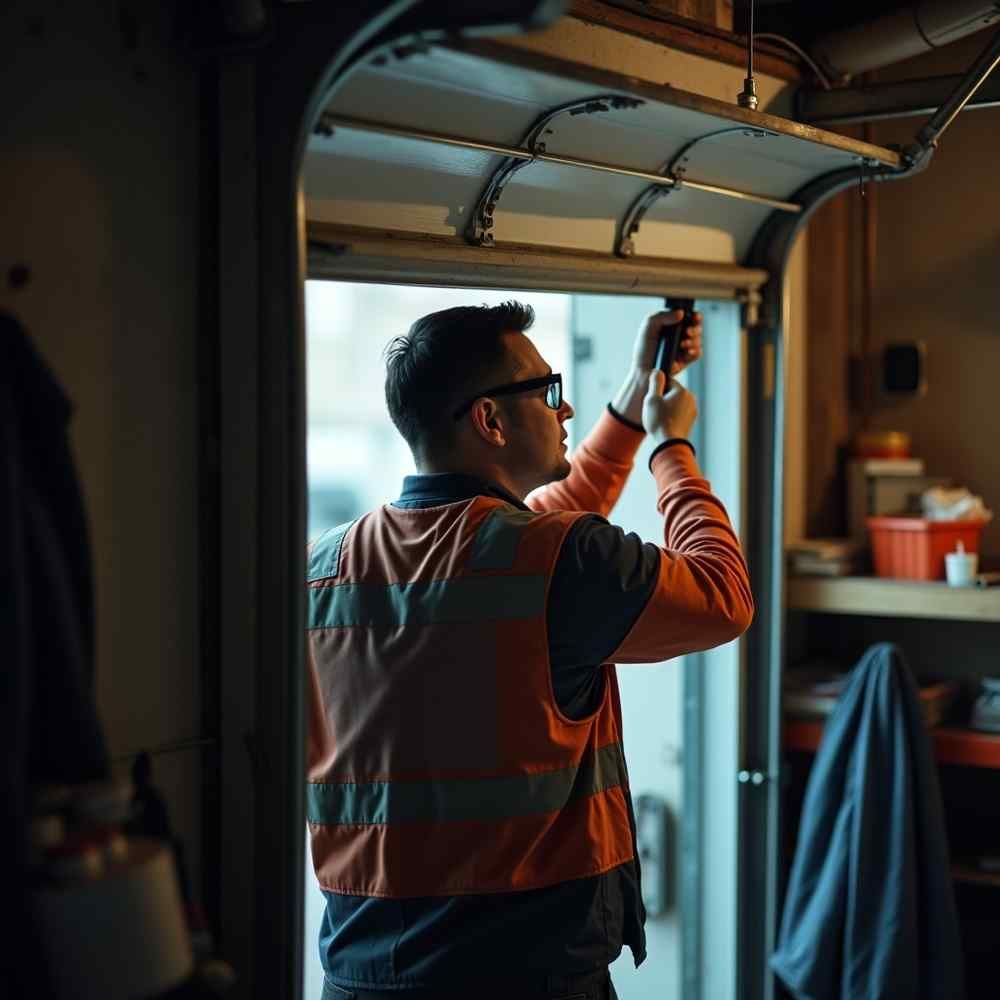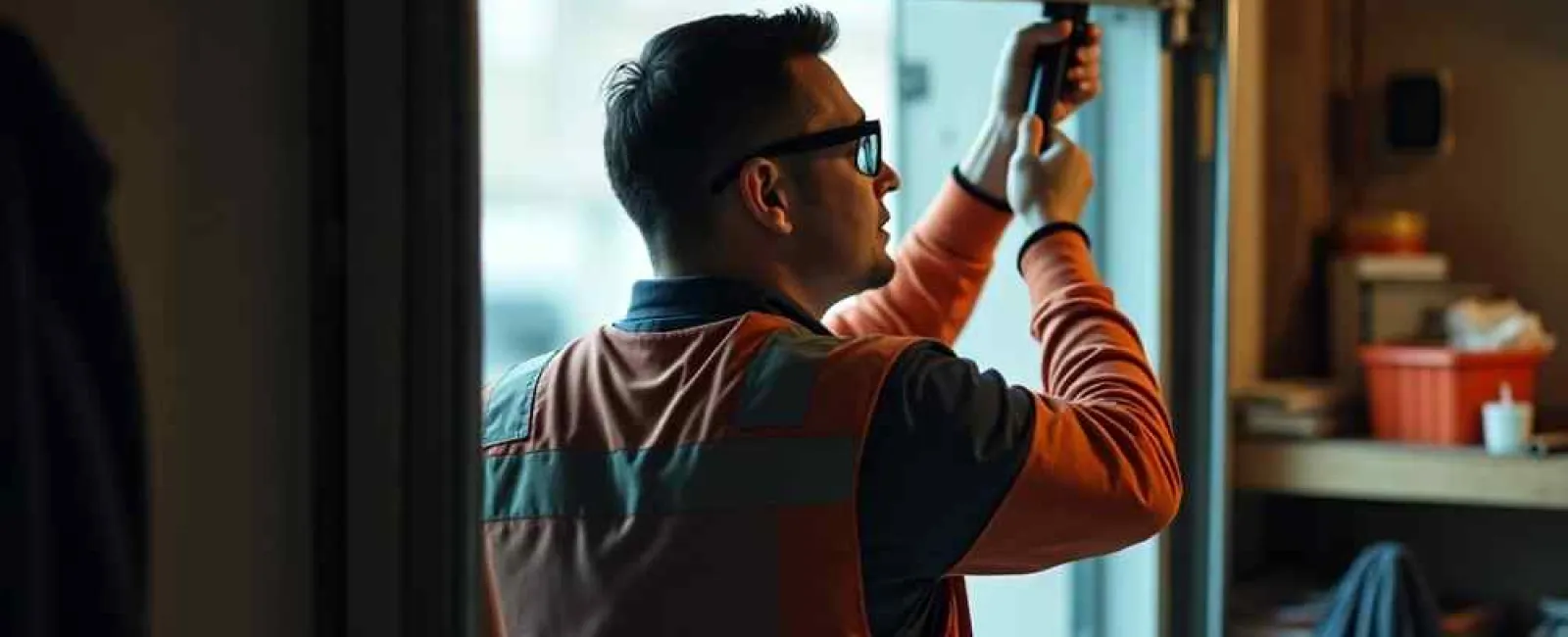- Learn about how you can ensure your garage door is safe
- Discover the warning signs of hazardous conditions
- Explore what fixes require professional repair

Most days, we never think about our garage door. It opens, we leave, we close it again only to repeat the process once we return home. But every now and then, we should stop and consider how safe our garage door is before it becomes a problem. After all, these doors can weigh as much as 450 pounds.
That's why we've put together this essential guide full of garage door safety tips to help you prevent accidents and injuries in the garage. We'll show you how to inspect your garage door security features to spot potential problems, how to test the safety features, and when to call for professional support.
Develop a Habit of Visual Inspections
One of the best ways to arm yourself with knowledge about your garage door is to simply start observing it. At least once per day, start to visually inspect the garage in operation and look around at all the parts of the garage at least once per week. Soon, you'll become familiar with your garage door's normal operation and be able to quickly spot potential issues.
- Watch your door open and close: Observing your garage door in action is a great way to assess how safe it is. As it opens and closes, look for any unevenness in the door. Does the door open and close smoothly? Or do there seem to be problem areas along the path?
- Inspect the sensors: Look at the two sensors towards the bottom of the garage door tracks. Are these sensors clean and clear? Are there any blinking lights? Dirty or misaligned sensors can create serious safety risks of a door closing on a person or car.
- Inspect hardware: Grab a ladder and flashlight if necessary and inspect the garage door's hardware. Look for loose screws, worn rollers, or bent tracks. Left unchecked, these could become more serious issues. Also look for evidence of corrosion or rust and address these as soon as possible.
- Inspect springs and cables: Your garage door probably has either a torsion spring or extension spring above the door frame. Visually inspect the spring for evidence of wear and rust. Do the same with the nearby safety cables. Do not touch or attempt to fix these items though.
Test Your Garage Door's Safety Features
Most modern garage doors with automatic openers come equipped with a number of safety features to ensure safe operation of your garage door. Testing these features periodically gives you a better chance of spotting a failure before it causes damage.
- Test sensors: Open the garage door fully. Then, set the door to close. As it begins closing, place an item in the path of the sensors. If the door reverses, repeat the test with the item at different points along the beam's path.
- Test the mechanical reverse: Your garage door should open up automatically if it senses an object beneath the door. Test this by opening the door, placing an object directly under the door, then set the door to close. If the garage door touches the object and continues trying to close, call for repair services immediately.
- Test backup battery: Unplug the automatic opener, then try to use the wall opener. If it's not working, replace the backup battery inside. If the power goes out, you may still want the automatic opener to function for a bit.
- Test the garage door's balance: Your garage door should stay at the same spot you open it up to, no matter where you open it to. Test the door's balance by disconnecting the door from the automatic opener and manually opening it halfway. If it falls shut, contact a trusted garage door maintenance team to fix the door's balance.
Avoid Garage Door Spring Injury
Garage doors consist of innumerable moving parts that activate every time your door opens and closes. But among all these parts, the spring is one of the most important and most dangerous. Garage door springs, especially extension springs, are under enormous tension to create the potential energy needed to open the heavy garage door. While newer torsion springs are safer, that doesn't mean we can ignore them.
In addition to periodic inspections of your garage door hardware, you should conduct a visual inspection of the springs and safety cables. Look for rust or corrosion while taking into consideration the age of the spring. The springs themselves are made with sturdy metals, but do have a lifespan. After about 7 years, it could be time to replace them. If you notice any flaws, call for garage door spring repairs immediately, as a garage door spring injury is especially threatening.
Call Us for Ultimate Garage Door Safety
Once you become familiar with how your garage door operates normally, you'll begin to quickly notice when something is out of the ordinary. This doesn't just save you money from having to fix larger problems, it can also save your life. Reaching out to Balanced Garage Doors for repairs or maintenance can help you avoid a garage door closing on your car, or worse. We'll repair your garage door and restore its safety fast, so you can get back to your regular routine. Contact us today to schedule service for your garage door.
